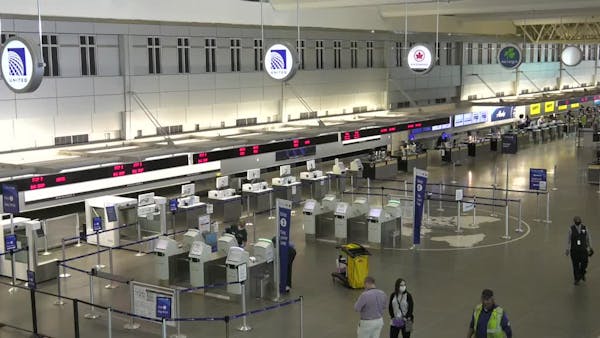It's a scary time to fly across the country. Still, some people are compelled to get on a plane to bring a child to college, visit family or head to a beach retreat for social isolation — attained only after managing a barrage of health-challenging situations.
For getting from A to B, most health experts lean toward driving, but some nod to flying. The Washington Post recently asked five epidemiologists if they would be willing to fly. Just one said he would. Two local infectious disease experts recently were split on the question. Michael Osterholm of the University of Minnesota deemed flying unsafe, saying that the virus can be carried by aerosols, that passengers can be seated near strangers for far too long and that much of the experience is beyond a flier's control. Dr. Frank Rhame with Allina Health said that over long distances, flying could be more safe, especially on a direct flight. Airplane cabin air is well filtered and much of it comes from outside the aircraft, he noted.
For those who need to fly, here are things to consider — some assuring, some not at all.
At the airport and checkpoints
At Minneapolis-St. Paul International Airport, electrostatic disinfectant spraying takes place each night, along with other upgraded cleaning practices and a focus on high-touch areas like door handles. Nearly 50 hand sanitizer stations are scattered throughout Terminals 1 and 2. Floor decals in both terminals remind people to stay 6 feet apart. Nearly 90 plastic shield guards are in place.
Travelers can schedule parking online for contact-free entry and exit.
To better plan your trip to MSP, where 21 of 77 restaurants are open with reduced hours, go to mspairport.com/TravelConfidently.
Even as airports adopt robust cleaning protocols, fewer people are flying. This month, MSP will have 253 scheduled daily departures on average, compared with 554 in July 2019.
Fewer people has meant little to no waiting at security checkpoints.
The Transportation Security Administration has changed some policies due to the pandemic. Driver's licenses and state-issued IDs that expired on or after March 1 are accepted as identification. Also, the REAL ID enforcement deadline has been extended to Oct. 1, 2021. Passengers can carry a single liquid hand sanitizer container of up to 12 ounces in carry-on bags, larger than the usual 3.4-ounce container allowed. Fliers are also encouraged to put items that might have once gone into a bin, such as keys and mobile phones, into carry-ons for the screening process.
In the air
Osterholm has said the key to combating the coronavirus is "distance, distance, distance." But how to secure 6 feet of separation, the minimum according to the Centers for Disease Control, on a plane?
Frequent flier John DiScala, who runs the Johnny Jet website, suggests that those who need to fly book a ticket with an airline that won't fill the plane: Alaska Airlines (through July 31 "and beyond"), Delta Air Lines (through Sept. 30), JetBlue (through July 31), and Southwest Airlines (through at least Sept. 30). First-class seating also buys a flier extra space.
Airlines are requiring face coverings and passengers must complete a health agreement saying they've had no COVID-19 symptoms and that they will wear a face mask.
Delta has made health a priority. The airline employs electrostatic cleaning between flights, its air filtration system uses hospital-grade HEPA filters and it hands passengers gift bags of masks and hand sanitizer.
Model Naomi Campbell recently sported a new look at an airport in Los Angeles: hazmat suit with a hoodie, gloves, goggles and a mask. Cocooned inside her own individual bubble, she was ready to fly. The get-up got noticed — but it also likely got her to her destination virus-free.
